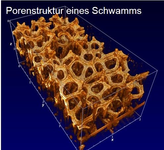A New Method for Fast Quantitative Mapping of Absolute Water Concentration in vivo
NeuroImage. Bd. 31. H. 3. San Diego, Calif.: Elsevier 2006 S. 1156 - 1168
Erscheinungsjahr: 2006
ISBN/ISSN: 1053-8119
Publikationstyp: Zeitschriftenaufsatz (Forschungsbericht)
Sprache: Englisch
Doi/URN: 10.1016/j.neuroimage.2005.12.063
| Geprüft | Bibliothek |
Inhaltszusammenfassung
The presence of brain edema, in its various forms, is an accompanying feature of many diseased states. Although the localized occurrence of brain edema may be demonstrated with MRI, the quantitative determination of absolute water content, an aspect that could play an important role in the objective evaluation of the dynamics of brain edema and the monitoring of the efficiency of treatment, is much more demanding. We present a method for the localized and quantitative measurement of absolute ...The presence of brain edema, in its various forms, is an accompanying feature of many diseased states. Although the localized occurrence of brain edema may be demonstrated with MRI, the quantitative determination of absolute water content, an aspect that could play an important role in the objective evaluation of the dynamics of brain edema and the monitoring of the efficiency of treatment, is much more demanding. We present a method for the localized and quantitative measurement of absolute water content based on the combination of two fast multi-slice and multi-time point sequences QUTE and TAPIR for mapping the T(2)* and T(1) relaxation times, respectively. Incorporation of corrections for local B(1) field miscalibrations, temperature differences between the subject and a reference probe placed in the FOV, receiver profile inhomogeneities and T(1) saturation effects are included and allow the determination of water content with anatomical resolution and a precision >98%. The method was validated in phantom studies and was applied to the localized in vivo measurement of water content in a group of normal individuals and a patient with brain tumor. The results demonstrate that in vivo measurement of regional absolute water content is possible in clinically relevant measurement times with a statistical and systematic measurement error of <2%.» weiterlesen» einklappen
Klassifikation
DFG Fachgebiet:
Medizin
DDC Sachgruppe:
Biowissenschaften, Biologie

